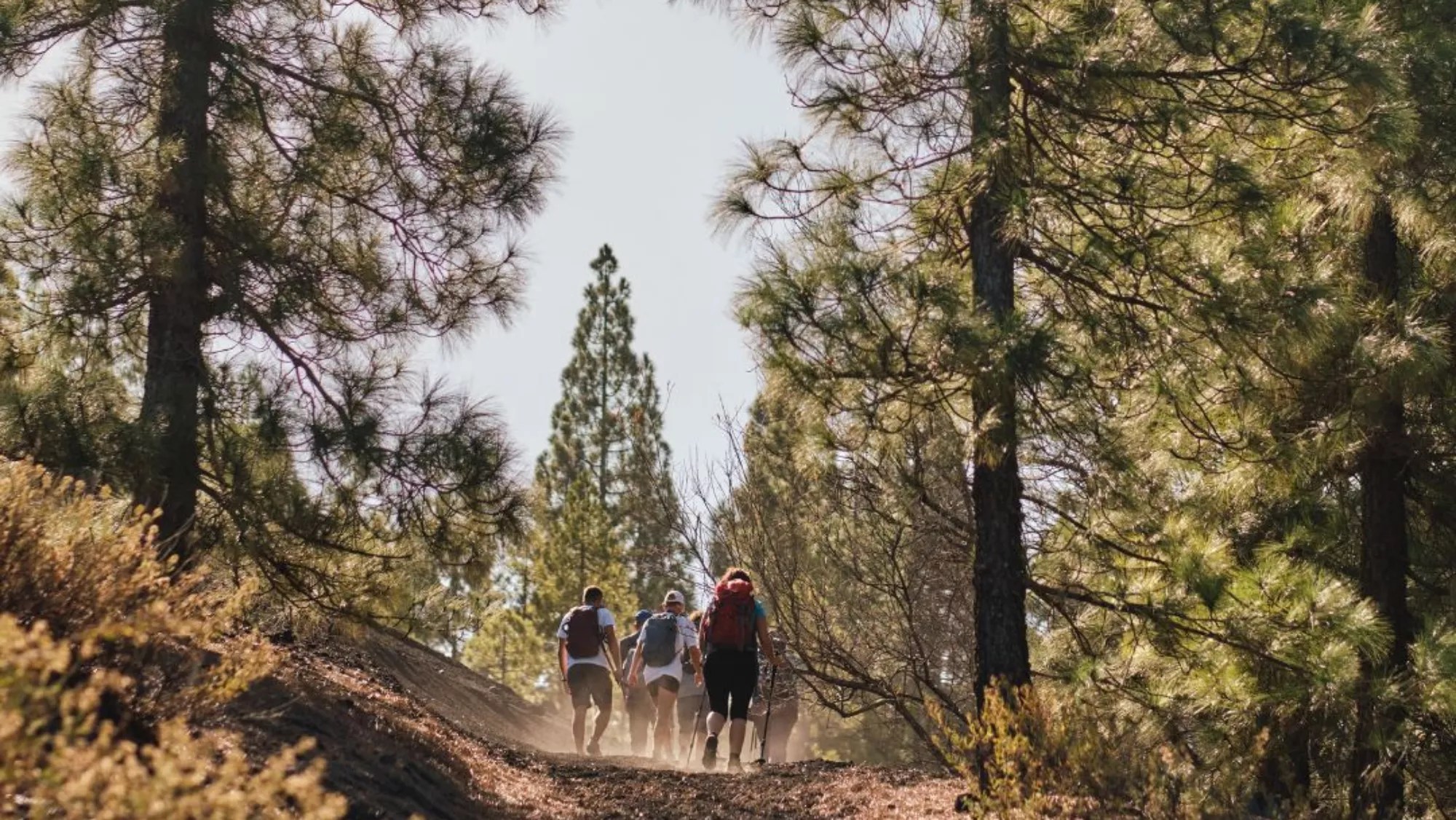Exponential increase in temperatures and greater frequency and intensity of torrential rains. These are the two main factors that lead to confirm the tropicalization of the Parque Nacional del Teide in recent years. It is the thesis of the expert Abel López Díez, professor of Geography at the University of La Laguna (ULL) and member of the Chair for Disaster Risk Reduction and Resilient Cities of the academic institution. His theory explains how climate change is already affecting the high mountains of Canary Islandsin general, and to the summit of Tenerife in particular.
López defended a paper along these lines at the recent II Conference on Risks and Prevention in Mountain. There, the climate future in high mountain areas was discussed, mainly in Tenerife and with Teide, which has just celebrated its 16th year as a UNESCO World Heritage Site, as the protagonist.
López has an impact on “two large island areas that are going to suffer in a special way the effects of climate change.” «On the one hand, the coastal sector for which sea level rise and the impact of marine storms. On the other hand, the high mountain. In high mountain areas such as Teide, extreme values are accentuated and dangers such as avalanches, floods, fires forest or frost. «The high mountains of the Canary Islands present the greatest climatic contrasts in all of Spain. In recent years, it has been raining more and more in summer and temperatures are higher, which means a tropicalization of the climate”, he comments. The greatest increase in temperatures occurs mainly at night, which means that more and more tropical and equatorial nights are recorded; that is, above 20 and 25.
Global warming
«In the Teide National Park, before the 1970s, we had no records that exceeded 20 degrees at night.. However, its progressive increase shows a worrying trend, a symptom of global warming,” says the expert. This rise in mercury reaches an average of 1.1 degrees “and continues to rise, due to the exponential increase in CO2 particles in the atmosphere.” López summarizes: “Our climate is increasingly similar to Cape Verde.”
This variation in high temperatures means that many of the species that inhabit Teide have to adapt and move to other more comfortable areas. This means that the pine forest already appears, which is from a lower strip. The concept of climate floors is modified.
Mitigation and adaptation strategies are key to preserving the National Park
The increase in equatorial nights is a worrisome feature of tropicalization. López points out that, even, “it is related to an increase in mortality.” He explains it: «What kills the most linked to this climatic variety are the night temperatures because they affect the most vulnerable sectors of the population, such as the elderly, and trigger deadly pathologies. It happens with heat waves.”
The other key factor is rainfall, which “decreases with more frequent and intense periods of drought in recent decades. And when it rains it does so in a much more torrential way. Summer rainfall is becoming more and more frequent», points out the geographer.
Water availability is lower when it rains more concentrated temporarily and especially. The natural system does not have the capacity to absorb this running water and the tendency is torrentialization that causes problems of all kinds. López underlines: “All the projections indicate that the decrease in rainfall may exceed 40% between now and the end of the century. If it already rains little, it will rain much less ».
Water deficit adaptation
Natural systems will have to adapt to that water deficit and thermal increase. More temperature and less rainfall equals more evaporation and desertification. This is paradigmatic in the Teide National Park, where the first evidence of climate change in the Canary Islands is recorded, “because – explains López – the thermoregulatory effect of the sea is lost. Hence, the thermal increase is greater than on the coast or the midlands.
The human factor It is essential to fight climate change from a double strategy: reducing the emission of greenhouse gases and the great challenge of adaptation in urban spaces and natural ecosystems. The professor considers the management of Teide National Park “another challenge” “as a heritage to be preserved from an environmental point of view” and warns: “Sustainability is key, but undertaking adaptation requires ambition and decisions that are not always pleasant.” For this reason, “the population must be educated and trained so that they understand the complexity of the emergency.”
López summarizes: «You have to preserve Teide, but know that the climatic characteristics are going to vary. Mitigation and adaptation strategies are necessary in aspects such as the volume of vehicles and visitors. He concludes: “It is in our hands to protect Teide, safeguard its beauty and safeguard its fragility in the face of the great challenge of climate change.”
Botanical species in serious danger
«Climate change puts the botanical species of the summits of Tenerife and La Palma at risk of disappearance». This is how the research group of the University of La Laguna Plant Conservation and Biogeography concludes the project on “knowledge to stop the loss of biodiversity in Canarian ecosystems”. This research, which in the case of the Island has focused on the Teide National Park, has made it possible to analyze the vulnerability of the endemic flora of 60 species from the peaks of Tenerife and La Palma in three climatic scenarios: present (1990-2019 ), short-term future (2041-2060), and long-term future (2061-2080). In Tenerife, the proportion of species with high and very high risk in the future (33% in the near future and 50% in the 2061-2080 scenario) is twice that of La Palma. 67% of the species analyzed in Tenerife have at least one factor that reduces their ability to respond to climate change. In summary, the ecosystem on the Island of Tenerife is at risk of biodiversity loss due to climate change. | JDM
















